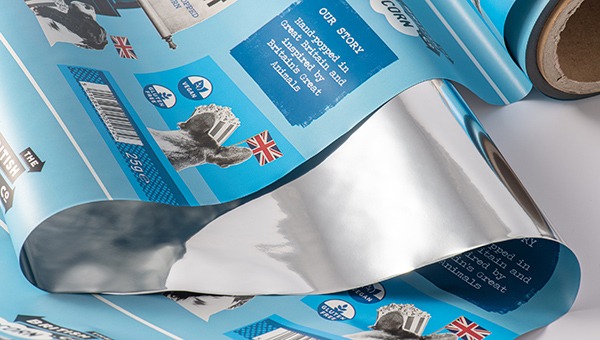The certification process for packaging inks is a critical element in the packaging industry, especially when it comes to ensuring the safety and quality of products. This process involves a series of steps that evaluate the inks used in packaging to ensure they are safe for use, particularly for food-related items. For marketing professionals, understanding this process is vital as it directly impacts brand reputation and consumer trust.
In recent years, there has been an increasing emphasis on the certification process for packaging inks due to the growing awareness of food safety and environmental concerns. Brands are now focusing more on using certified inks to align with global safety standards and regulations. This article delves into the nuances of this process, outlining the key steps and considerations essential for those in the marketing field.

Understanding the Importance of Certification
Certification is not just a formality; it is a necessity. It ensures that the inks used in packaging do not contain harmful chemicals that could leach into food products, posing health risks to consumers. For marketing professionals, promoting products with certified inks can enhance brand image and consumer confidence.
Moreover, compliance with certification standards can open new markets for brands, especially in regions with strict regulations on packaging materials. This can be a significant competitive advantage for companies looking to expand globally.
Steps Involved in the Certification Process
1. Initial Assessment
The first step in the certification process is the initial assessment, where the ink formulation is reviewed to ensure it meets the basic safety standards. This involves analyzing the composition of the ink and identifying any potentially harmful substances.
2. Testing and Analysis
Once the initial assessment is complete, the inks undergo rigorous testing and analysis. This includes evaluating the ink’s performance under various conditions, such as temperature changes and exposure to different types of packaging materials. The goal is to ensure that the ink remains stable and does not degrade over time, which could compromise the packaging’s integrity.
3. Compliance with Regulations
One of the most critical aspects of the certification process is ensuring compliance with international and local regulations. This involves adhering to guidelines set by regulatory bodies such as the FDA, EU, and other regional authorities. Brands must ensure that their inks meet these standards to avoid legal repercussions and ensure product safety.
The Role of Technology in Certification
Technology plays a pivotal role in the certification process for packaging inks. Advanced analytical tools and methods are used to assess the safety and efficacy of inks, providing more accurate and reliable results. For instance, spectroscopic analysis and chromatography are commonly used techniques to identify chemical components and ensure they are within permissible limits.
Moreover, technology facilitates better traceability of inks, allowing brands to track the source of raw materials and manufacturing processes. This transparency is crucial for maintaining consumer trust and ensuring compliance with certification standards.
Challenges in the Certification Process
1. Evolving Regulations
One of the significant challenges in the certification process is keeping up with evolving regulations. As new research emerges and consumer awareness increases, regulatory bodies frequently update their guidelines to ensure maximum safety. Brands need to stay informed and adapt to these changes promptly.
2. Cost Implications
Another challenge is the cost associated with certification. The process involves extensive testing and compliance measures, which can be expensive. However, the long-term benefits of certification, such as enhanced brand reputation and consumer trust, often outweigh these costs.
Benefits of Certification for Marketing Professionals
For marketing professionals, promoting certified inks can be a powerful tool in brand positioning. It demonstrates a commitment to quality and safety, which are highly valued by consumers today. By highlighting the use of certified inks, brands can differentiate themselves in a competitive market and build stronger relationships with their audience.
Furthermore, certified inks can enhance the visual appeal of packaging, making products more attractive on store shelves. This can lead to increased sales and customer loyalty.
Future Trends in Packaging Ink Certification
As the packaging industry continues to evolve, so does the certification process for packaging inks. Future trends indicate a greater focus on sustainability, with an emphasis on using eco-friendly inks that minimize environmental impact. Brands are increasingly adopting green practices, and certification standards are likely to reflect these changes.
Another emerging trend is the use of smart packaging technologies, which incorporate digital features into packaging designs. These technologies require specialized inks that meet specific certification criteria, presenting new opportunities and challenges for brands.
Conclusion
In conclusion, the certification process for packaging inks is a fundamental aspect of the packaging industry, especially for marketing professionals. Understanding this process is crucial for ensuring product safety, compliance with regulations, and enhancing brand reputation. As the industry continues to evolve, staying informed about the latest trends and challenges will be key to success in this dynamic field.
For more insights on food-safe inks, you can visit [Troy Group’s blog on inks for food packaging](https://www.troygroup.com/blog/inks-for-food-packaging-what-you-need-to-know) here.

FAQs
What are the critical steps in the certification process for packaging inks?
The key steps include initial assessment, testing and analysis, and compliance with regulations.
Why is certification important for packaging inks?
Certification ensures that inks are safe for use, particularly in food packaging, enhancing brand reputation and consumer trust.
How can technology aid in the certification process?
Technology provides advanced tools for accurate testing and traceability, ensuring compliance and safety.
For additional insights, you might find this article on food-safe inks valuable.
This article contains affiliate links. We may earn a commission at no extra cost to you.






